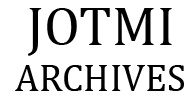Innovation for Sustainability: Overcoming the Productivity of the Sugar-and-Ethanol Industry’s Conventional System
DOI:
https://doi.org/10.4067/S0718-27242010000400007Keywords:
innovation, sustainability, sustainable agriculture, organic products.Abstract
The article’s objective is to analyze a process of technological innovation incorporation in the realm of organic agriculture which, as per legal and conceptual definition, should take into consideration the economic, social and environmental aspects according to the proposals of sustainable development. This article presents the results of a case study carried out at Native Alimentos Orgânicos Ltd. , a Brazilian company producing organic sugar and ethanol with an exporter profile and responsible for the world’s largest organic agriculture project. The organic production system developed by the company demanded important innovation in the agricultural and industrial areas. The study shows that the choice for innovations that respond simultaneously to economic, environmental and social issues, besides being viable, is essential for the Brazilian sugar to access markets of developed countries. Thus the case shows that it is possible to innovate with profit and social and environmental concern simultaneously.Downloads
References
BELL, M., Pavitt, K. (1993). Technological Accumulation and industrial growth: contrast between developed and developing countries. Industrial and Corporate Change. 2(1), 157-210.
BORCH, K. (2007). Emerging technologies in favor of sustainable agriculture. Futures, 39(9), 1.045-1.066.
BRASIL (2003). Law no. 10831, December 23rd, 2003. Dispoe sobre a agricultura organ ica e da outras providencias. Diario Oficial da Uniao, Brasilia, DF.
CARSON, R. (2002). Silent spring. Boston: Mariner Books.
DAROLT, M. (2002). Agricultura organica: inventando o futuro. Curitiba: IAPAR.
EISENHARDT, K. (1989). Building theories from case study research. The academy of management review, 14(4), 532-550.
ELKINGTON, J. (2001). Canibais com garfo e faca. Sao Paulo: Makron Books.
European Environment Agency - EEA. Late lessons from early warningsXhe precautionary principle 1896-2000. Copenhague, EEA, 2001.
Institute de Tecnologia Social - ITS. (2004). Reflexoes sobre a construcao do conceito de tecnologia social. In: DE PAULO, A. et al. Tecnologia social: uma estrategia para o desenvolvimento. Rio de Janeiro, Fund. Banco do Brasil, 2004.
International Federation of Organic Agriculture Movements - IFOAM. (2009). Global Organic Agriculture: Continued Growth. IFOAM. http://www.ifoam.org/press/press/2008/Global Organic Ag riculture Continued Growth.php [Accessed September 29,2010].
KEMP, R., Arundel, A. (1998). Survey indicators for environmental innovation. Indicators and Data for European Analysis - IDEA.http://www.step.no/old/Projectarea/IDEA/ldea8.pdf [Accessed September 29, 2010].
LELE, S. (1991). Sustainable development: a critical review. World Development, 19(6), 607-621.
MACEDO, I. (2005). A energia da cana-de-acucar: doze estudos sobre a agroindustria da cana-de-acucar no Brasil e a sustentabilidade. Sao Paulo: UNICA.
NORMAN, W.; Macdonald, C. (2004). Getting to bottom of triple bottom line. Business Ethics Quartely. 14(2), 243-262.
PAVITT, K. (1984). Patterns of technical change: towards a taxonomy and a theory. Research Policy, 13(6), 343-73.
SACHS, I. (1993) Estrategias de transicao para o seculo XXI: desenvolvimento e meio ambiente. Sao Paulo, Studio Nobel e Fund, de Desenvolvimento Administrativo.
SHRIVASTAVA, P. (1995). Environmental technologies and competitive advantage. Strategic Management Journal, 16, 183-200..
THE ECONOMIST. (2006). Voting with your trolley: Can you really change the world just by buying certain foods?. The Economist, 381 (8507), 81 -83.
WORLD COMMISSION ON ENVIRONMENT AND DEVELOPMENT - WCED (1991). Nosso futuro comum. Rio de Janeiro: FGV.
YIN, R. Case Study Research: design and methods. Sage Publications, 1994.
Accepted November 23, 2010
Downloads
Published
How to Cite
Issue
Section
License
Copyright (c) 2010 Journal of Technology Management & Innovation

This work is licensed under a Creative Commons Attribution-ShareAlike 4.0 International License.












